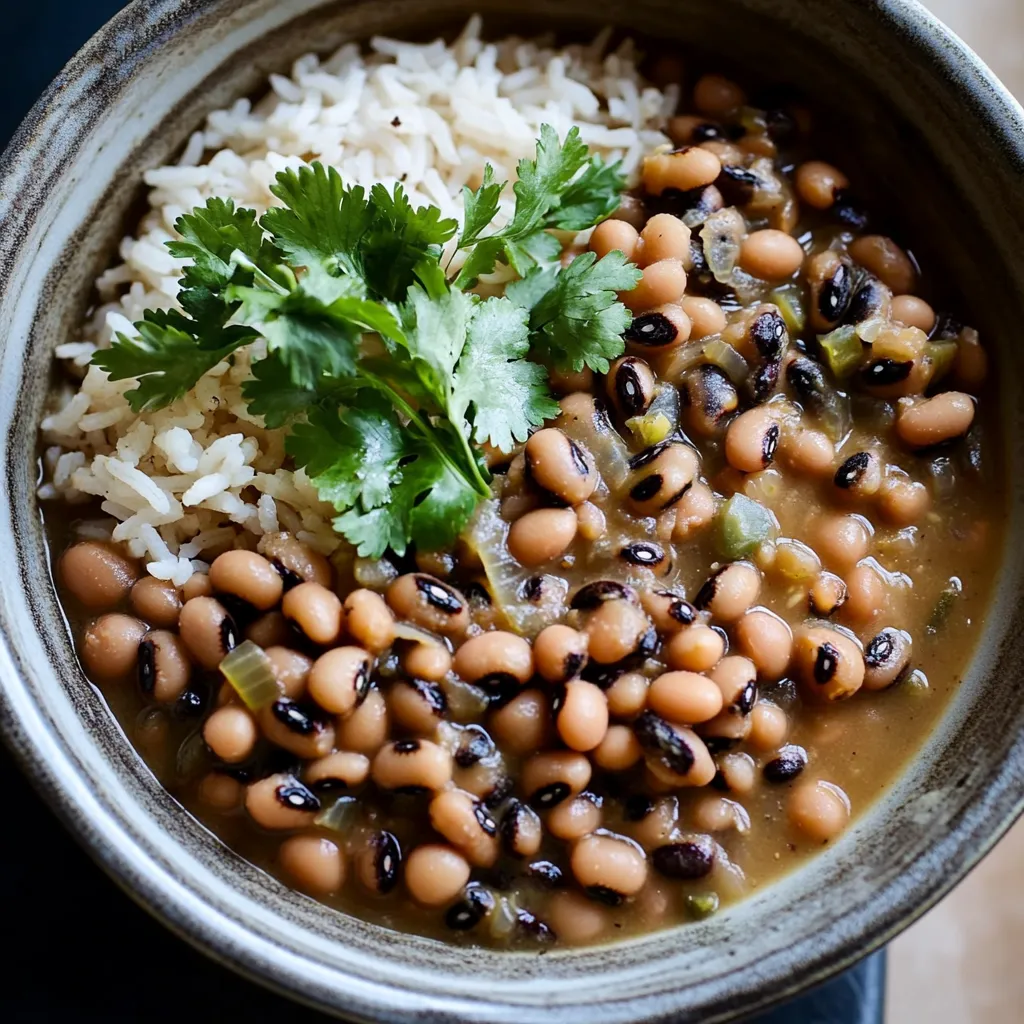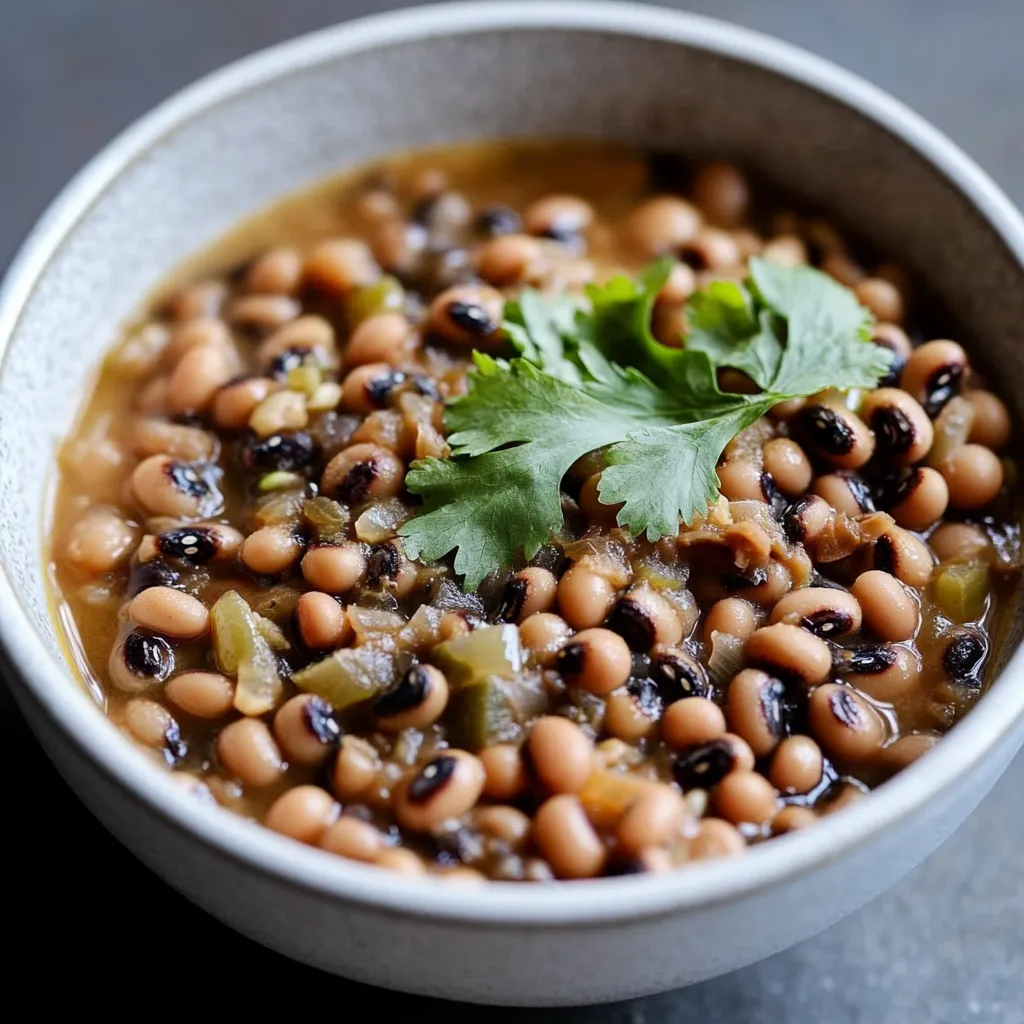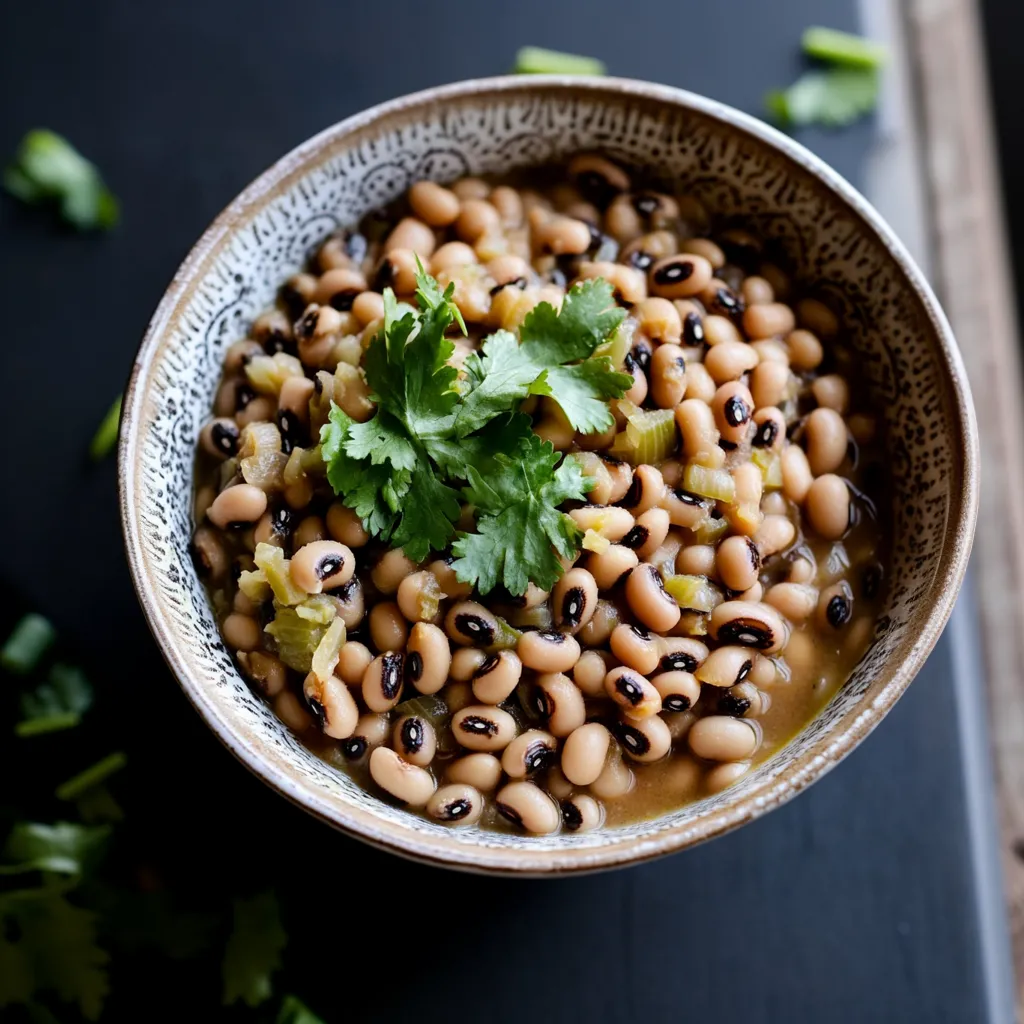 Pin it
Pin it
Southern cuisine treasures black eyed peas for good reason - they've got history and amazing taste. This plant-based take keeps all the smoky richness and creamy goodness of the old-school version while staying true to its roots, just without animal products.
I still laugh about when I nailed this vegan recipe - even my Southern grandma said she liked it better than her traditional one! The trick was getting that smoky taste just right. After trying tons of combinations, I finally hit the jackpot mixing smoked paprika with liquid smoke to create that flavor we all wanted.
Key Ingredients
- Black Eyed Peas: Go for dried ones that look smooth with even beige coloring and clear black spots - this means they're fresh and will cook evenly
- Smoked Paprika: This creates your base smoky flavor - worth spending extra on Spanish or Hungarian kinds for the real deal taste
- Liquid Smoke: A tiny bit goes a long way to make your broth taste amazing and give that depth you need
- Aromatics (Onion, Celery, Bell Pepper): This combo starts your flavor - pick crisp, fresh veggies for best results
- Soy Sauce: Gives that rich, savory taste that makes up for not using pork - try naturally brewed ones for extra flavor
Step-by-Step Guide
- Getting Ready:
- Cover your black eyed peas with cool water (at least 2 inches above) and let them sit overnight. Cut all veggies the same size so they cook evenly. Have your broth and seasonings handy before you start cooking.
- Making the Flavor Base:
- Warm olive oil in a sturdy pot over medium heat. Cook diced onions until see-through (about 5-7 minutes). Throw in celery and bell pepper, cooking till soft but still colorful. Add garlic last and cook just until you can smell it - don't let it burn.
- Putting It Together:
- Drain and wash the soaked peas. Mix them with your cooked veggies. Pour in enough broth to cover peas by about an inch. Add a bay leaf and bring everything to a gentle bubble. Turn down heat and cook with lid partly on, stirring now and then.
- Building Taste:
- Start checking if peas are soft after 20 minutes. Add small amounts of smoked paprika and liquid smoke, tasting as you go. Mix in soy sauce bit by bit for richness. Keep cooking until peas are as soft as you want (usually 35-45 minutes total).
- Last Touches:
- Taste and add more smokiness or salt if needed. Crack in some fresh black pepper. Let everything sit for 5-10 minutes before serving so flavors can mix well.
 Pin it
Pin it
Back home in the South, black eyed peas weren't just food - they connected us to our family story. Grandma always told me each pea stood for money coming your way in the new year. Now I can share this tradition with my vegan friends too, keeping all those soul-satisfying flavors intact.
Changing With The Seasons
In summertime, I like to brighten this dish by tossing in fresh thyme or sage right before serving. When it gets cold outside, a pinch of cayenne warms things up nicely. You can easily tweak the recipe based on what you like and what time of year it is.
Keeping Leftovers
These plant-based black eyed peas actually taste better the next day as the flavors mix together more. I keep mine in sealed glass containers in the fridge for up to five days. If you want to save them longer, pack portions with some liquid into freezer containers - they'll stay good for three months.
What To Serve With Them
There's a reason folks always pair these with collard greens - that slight bitter edge works magic with the creamy, smoky peas. I like mine over brown rice or with a chunk of cornbread to soak up all that tasty liquid. For something different, try them with quinoa or alongside some roasted sweet potatoes.
 Pin it
Pin it
Quick Instant Pot Method
Using an Instant Pot makes this almost too easy. Just sauté your veggies with the Sauté button, add everything else, then cook on high pressure for 15 minutes and let it release naturally. They turn out just as tasty, though I think the stovetop way gives you more control over how soft they get.
Fixing Common Problems
If your peas stay hard, they're probably old or your liquid isn't hot enough. Always buy fresh peas and keep them at a gentle simmer while cooking. When they're still firm after the normal cooking time, just keep cooking in 5-minute chunks until they soften up right.
What makes this vegan version so special is how it respects tradition while making room for new choices. Every time I cook this dish, I think about how food brings people together no matter what they eat. The smoky smell filling the kitchen, watching the peas slowly soften, and tasting how the flavors deepen - it's like a slow, mindful practice that honors old ways while making them work for today.
Health Benefits
These vegan black eyed peas pack a serious nutrition punch. Besides protein, they're loaded with folate that helps your cells grow and keeps your DNA healthy. The bell peppers add vitamin C, which helps your body use the iron in the peas. Eat them with collard greens and you've got a meal that boosts your immune system and keeps you feeling great.
Different Ways Around The South
As I've traveled through the South, I've seen so many cool twists on black eyed peas. Louisiana cooks might add a bit of filé powder for that Creole touch. In Georgia, you might catch a hint of sorghum syrup for sweetness. Some families in Mississippi throw in diced jalapeños for heat. Each version tells its own local story while keeping the heart of the dish.
Prep Ahead Plan
These peas are perfect for planning your week's meals. I often make twice as much on Sunday, keeping some in the fridge and freezing the rest. They can be the star of several meals: classic with rice, tossed into a cold salad with veggies and dressing, or blended into a smooth dip. Just cook them slightly firm if you'll be reheating them through the week.
Serving At Gatherings
I've found these vegan black eyed peas get people talking at parties. Even serious meat lovers can't believe how rich they taste. For get-togethers, I set up a 'good luck peas station' with toppings like fresh tomatoes, green onions, hot sauce, and herbs so everyone can fix their bowl their way. It's such a nice way to share both food and culture.
Beyond New Year's Day
While everyone knows about eating them on New Year's, these peas deserve a spot at the table all year. They fit perfectly at Juneteenth celebrations, family reunions, and Sunday dinners. I've even served them at wedding dinners, where they stand for families coming together. Just make sure to serve them with the respect and background story they deserve.
Soaking Secrets
How you soak your peas really matters for the final texture. After lots of testing, I've found soaking them at room temperature for 8-12 hours works best. Some cooks like adding a piece of kombu seaweed during soaking to make them easier to digest and add minerals. Just don't add salt while soaking - it can make the skins tough.
 Pin it
Pin it
